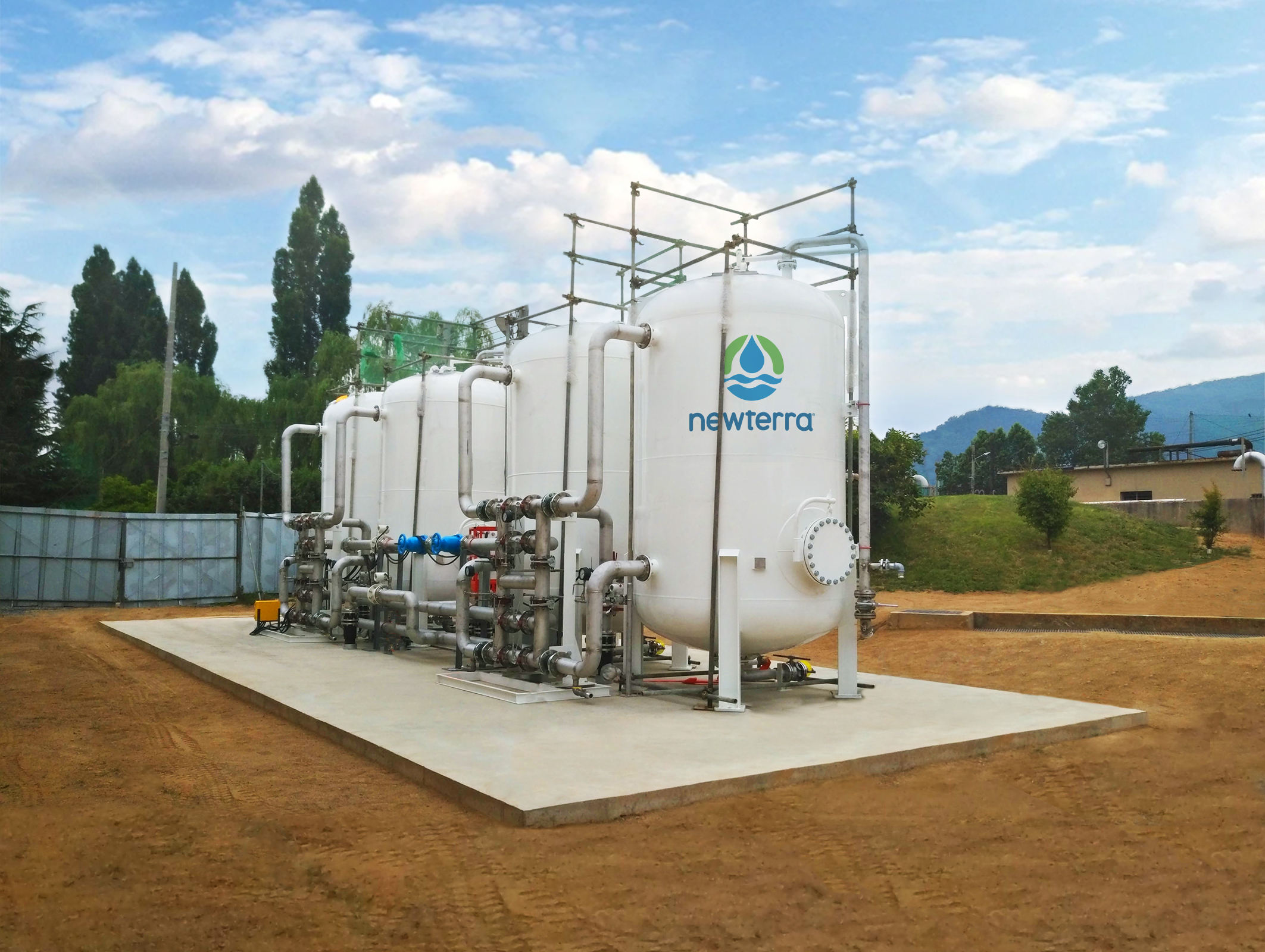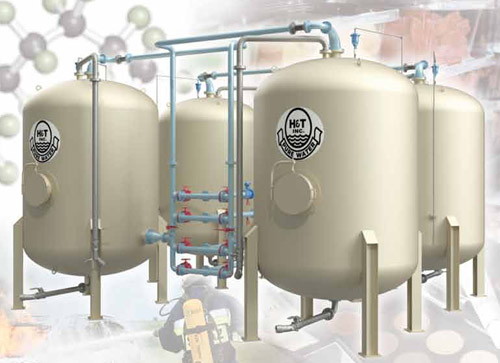M270 PFAS Treatment for Industrial Water Systems
Your Guide to PFAS Treatment Technologies and Conveniences
The occurrence of PFAS contamination in water sources requires a detailed understanding of readily available therapy modern technologies. Different techniques, such as turned on carbon filtration, ion exchange systems, and progressed oxidation processes, present distinct benefits in dealing with these persistent pollutants. Each innovation not just targets particular PFAS compounds however likewise plays an essential function in improving overall water top quality and protecting ecological integrity. As communities face the effects of PFAS exposure, the selection of a proper therapy method becomes significantly essential, triggering a closer examination of these technologies and their particular advantages.
Understanding PFAS Contamination
Comprehending PFAS contamination is vital for resolving its pervasive influence on ecological and human wellness (m270 pfas treatment). Per- and polyfluoroalkyl materials (PFAS) are a team of artificial chemicals widely used in various commercial and consumer products because of their water- and grease-resistant residential or commercial properties. Commonly found in firefighting foams, non-stick cooking equipment, and water-repellent fabrics, PFAS have actually gotten in the environment via production processes, wastewater discharges, and leaching from landfills
When released, these materials persist in the atmosphere, bring about widespread contamination of dirt and water resources. Their unique chemical structure, defined by solid carbon-fluorine bonds, renders them immune to degradation, resulting in a phenomenon recognized as "forever chemicals." PFAS can collect in the human body and the food chain, potentially creating negative health results, including immune system disruption, developing problems, and an increased threat of specific cancers.
Regulatory firms and health organizations are increasingly identifying the importance of PFAS contamination, prompting initiatives to check, analyze, and mitigate its effects. Understanding the pathways of PFAS contamination is essential for informing public policy and establishing reliable strategies to shield both ecological and human health.
Review of Therapy Technologies
Numerous treatment technologies have been developed to resolve the challenges presented by PFAS contamination in water and dirt. These innovations can be broadly categorized right into numerous categories, each with its distinct devices and performance in removing PFAS compounds.
One noticeable approach is ion exchange, which utilizes resin materials to record and get rid of PFAS from contaminated water. One more modern technology, advanced oxidation processes (AOPs), utilizes strong oxidants and ultraviolet light to damage down PFAS right into less harmful substances.

Triggered Carbon Filtration
Triggered carbon purification is a commonly utilized method for the removal of PFAS from polluted water, understood for its capacity to adsorb a wide series of organic compounds. This innovation employs triggered carbon, an extremely porous product with an extensive surface, which facilitates the binding of PFAS molecules via physical adsorption. The efficiency of activated carbon in removing PFAS is influenced by several factors, consisting of the sort of carbon made use of, the get in touch with time, and the concentration of PFAS in the water.
One of the continue reading this advantages of turned on carbon filtering is its adaptability; it can be carried out in different configurations, such as granular activated carbon (GAC) systems or powdered turned on carbon (POLITICAL ACTION COMMITTEE) systems. GAC systems are generally employed in larger-scale applications, while special-interest group can be utilized in smaller or short-lived arrangements. Moreover, the technology is reasonably simple to operate and keep, making it easily accessible for numerous water therapy centers.

Ion Exchange Systems
Ion exchange systems stand for one more effective technique for the removal of PFAS from infected water, matching methods like activated carbon purification. These systems operate on the concept of exchanging ions in the water with ions hung on a resin product. Ion exchange resins can be especially created to target the negatively charged PFAS substances, efficiently recording them and enabling cleaner water to pass through.
One of the key advantages Learn More Here of ion exchange systems is their capacity to eliminate a variety of PFAS, including both long-chain and short-chain variants. This adaptability makes them appropriate for different applications, ranging from municipal water therapy to commercial procedures. Furthermore, ion exchange systems can commonly accomplish lower discovery limitations for PFAS compared to a few other treatment techniques, hence improving water top quality.
Nonetheless, it is necessary to check and handle the regeneration of ion exchange media, as the efficiency can decline with time due to saturation. Appropriate upkeep and substitute of the material are crucial for sustaining the system's efficiency. On the whole, ion exchange systems offer a trusted and efficient service for PFAS removal, contributing considerably to risk-free alcohol consumption water requirements and ecological security.
Advanced Oxidation Processes
Advanced Oxidation Processes (AOPs) make use of effective oxidants to properly weaken PFAS substances in infected water. These innovative therapy approaches generate highly reactive species, such as hydroxyl radicals, that can break down complex PFAS molecules right into much less harmful byproducts. m270 pfas treatment. AOPs usually use mixes of ultraviolet (UV) light, ozone, hydrogen peroxide, or Fenton's reagent, enhancing the oxidation capacity and enhancing destruction efficiency
The main advantage of AOPs hinges on their capacity to target a broad series of PFAS substances, consisting of both long-chain and short-chain variations. This flexibility is crucial, as PFAS contamination commonly involves mixes of various substances with differing chemical structures. Furthermore, AOPs can be integrated into existing water treatment systems, making them a functional solution for numerous towns and sectors.
Nonetheless, the application of AOPs can be resource-intensive, needing careful consideration of functional expenses and energy consumption. Additionally, while AOPs work in breaking down PFAS, they might not completely eliminate all results, demanding additional treatment steps - m270 pfas treatment. In general, AOPs represent a promising opportunity for attending to PFAS contamination, contributing to cleaner water sources and enhanced public wellness security

Final Thought
To conclude, attending to PFAS contamination calls for a thorough understanding of readily available therapy a knockout post technologies. Triggered carbon purification, ion exchange systems, and progressed oxidation procedures each present one-of-a-kind advantages for efficiently removing these dangerous substances from water sources. By choosing the suitable technology, communities can boost water high quality, protect public health, and mitigate the ecological risks connected with PFAS direct exposure. Continued study and application of these methods are crucial for efficient management of PFAS contamination in impacted areas.